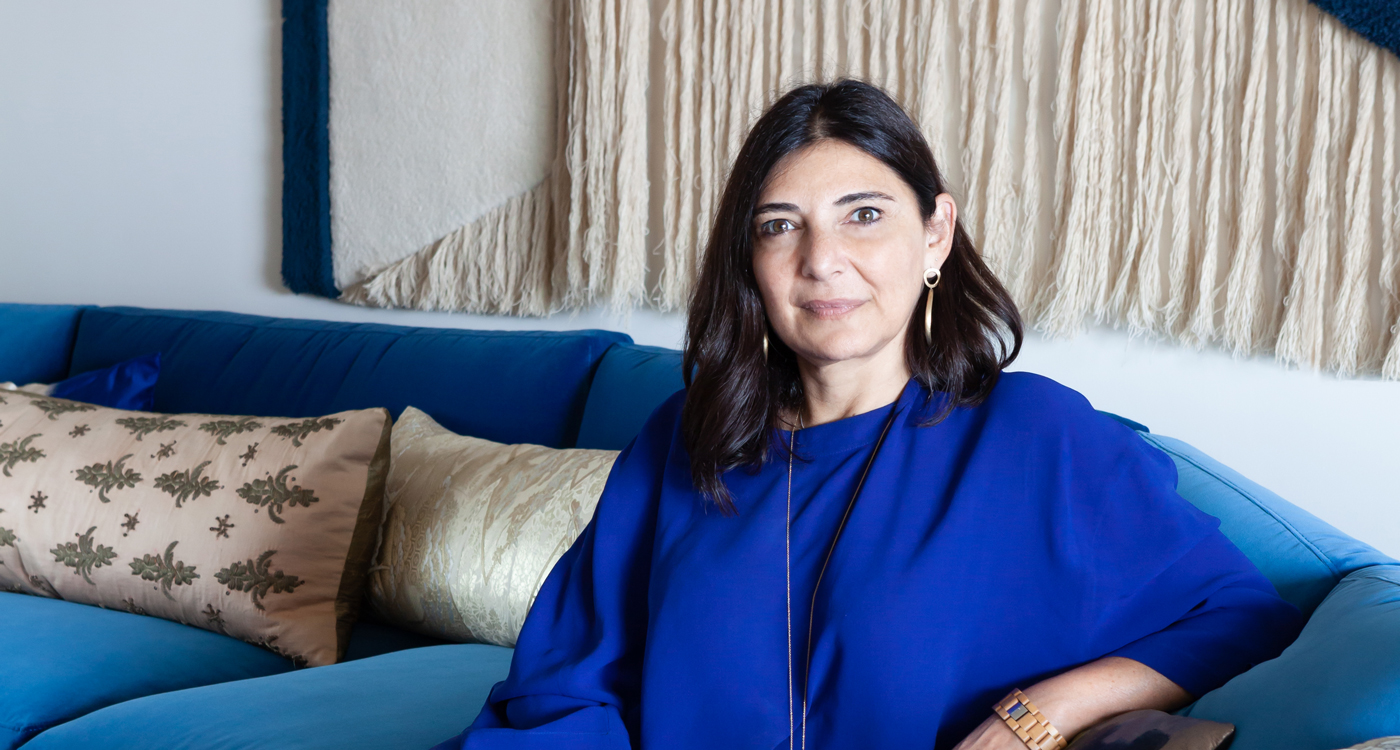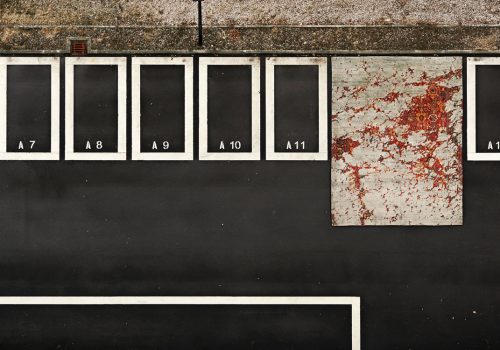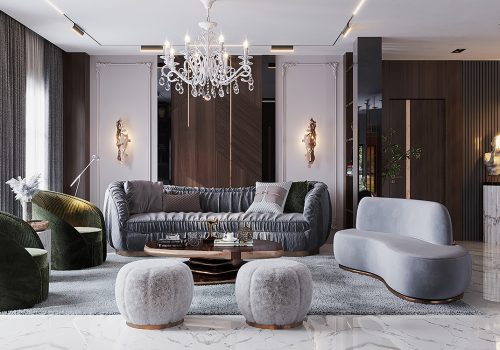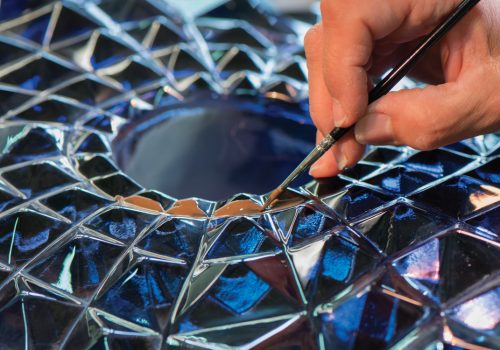World renowned for her ability to merge Japanese austerity and Middle Eastern ornamentation, we couldn’t resist the chance to see inside Nada Debs’ Beirut home, as it revealed another chapter in the story of this designer with a vision.
Nada Debs has an eye for colour. It’s evident from the moment she greets me at the door of her 300 square-metre home, fully clad in sunny yellow. This also happens to be the predominant shade in the sitting area where she leads me, a former balcony that she’s reconfigured – like most of the 1980s era apartment – into a cheerful and bright space with sliding windows that open all the way. Adjacent is the central living space, awash in electric blue, and beyond that lies one more smaller salon in muted-pink, which the designer funnily enough refers to as ‘the womb’ of her home. What ties these disparate spaces together is a carefully measured mix of her own pieces, one-of-a-kind finds and antiques she’s collected over the years, like the unusual, circular, cognac-coloured 1950s Chinese carpet in the blue room. “It was something that my uncle brought back from one of his travels. He had put it to auction with some other belongings but it was the only item that didn’t sell, so I bought it,” the Lebanese designer explains.

Photography: Ieva Saudargaite Douaihi
As it turns out, Debs’ family immigrated to Japan in the early 1900s where they built a thriving textile business. And it was there that she grew up although she eventually found her way to Beirut in 2000, which is when she began designing spartan pieces of furniture influenced by her Japanese aesthetic. But following a trip to Damascus, a city known for it artisans and craftsmanship, she developed a newfound appreciation for the complexity of oriental culture. “I saw that the craft was very intricate, but thought that the end product, like that tiny mother-of-pearl table (she points to one in the blue room), was really traditional. I wanted to come up with an idea that would make people see it in a new way,” she recalls.
Debs subsequently reimagined traditional Islamic motifs by applying them onto the minimalist forms she grew up with. “Japan is about removing, while the Middle East is about adding. Even when you look at religion it’s about repetition, Sufi dancers go around in circles; calligraphy and geometry are repetitive. This part of the world is about that, this is how you reach God and that’s what’s considered beautiful in this culture,” she explains. “But when you go to Japan, it’s about pairing everything down to its essence, clearing your mind, meditating, and that’s also a way to reach God.” That philosophical approach is what has informed her designs for most of the two decades since she began making furniture in this very apartment, where friends would visit for tea and peruse her latest creations. “If you ask me what I do,” she says, “it’s not furniture. It’s finding a balance between opposites.”

Photography: Ieva Saudargaite Douaihi
The result of this duality can be seen throughout her eponymous, handcrafted collection, which has been evolving ever since 2000. And here in her home, the clear acrylic ‘mousharabieh’ (swivel screen panels) that divides the central room from ‘the womb’ is intricate like the traditional wood iteration, yet exquisitely light. Exuberantly hued decorative pillows are made from vintage silk obis repurposed into a streamlined, modern accessory and her use of marble is ubiquitous.
It is this unique balance that makes Nada Debs stand out, and it is also what caught the attention of the marketing team at IKEA, who were on the lookout for a Ramadan-themed collection for their Middle East stores. But the group needed assurance that they wouldn’t be delving into a project that would be completely off-brand and Debs’ vision fit the bill perfectly. Indeed, her 45-piece collection that’s launching this February is right in synch with the paired-down Swedish brand and Oriental exoticism.
This yin and yang approach seems to be catching on elsewhere, too. Debs is launching her Marquetry Mania collection in Shanghai this March, at House of Wang, a new and high concept store. “They’re seeing that the Chinese are becoming more sophisticated, and they also want brands,” Debs points out.
And, in April she will launch a collaboration of handbags with Marzouk in Kuwait, just before heading to New York City in May to showcase her wares with House of Today, at an
event that will include eight established Lebanese furniture and product designers.
Her singular and unwavering perspective is clearly resonating with the global mind-set. It is a narrative that expresses the world’s current dichotomy – the struggle between old and new, religion and spirituality and capitalism versus sustainability. Yup, Nada Debs is pressing all the right buttons.

Nada Debs collaborated with IKEA on the their LJUV collection, which is the Swedish word for delightful, in which traditional Middle Eastern patterns and symbols meet Scandinavian design.












